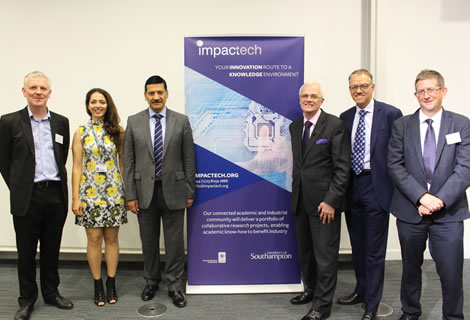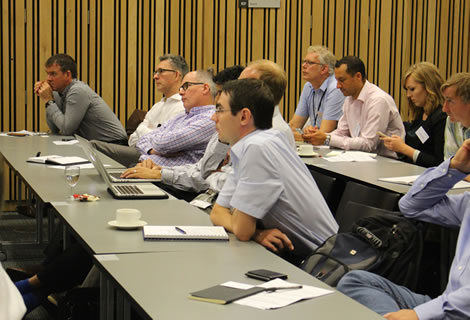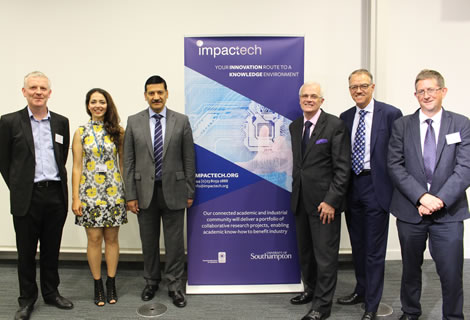Three top performing MEng Electrical and Electronic Engineering students from the Universityâs Malaysia Campus (USMC) have each been awarded prestigious Lloydâs Register Foundation (LRF) scholarships.
Tim Kent, Technical Director (Marine) from Lloydâs Register joined Professor Paul Lewin, Head of Electronics and Computer Science (ECS), to present scholarships to the fourth year students Yiqian Hui, Aaron Pang and Wen Yee Tey. The students were honoured following their excellent academic and personal performance during the previous academic year. The scholarships cover each studentâs tuition fees for the coming year. Not only have the three students been awarded with scholarships this year, they also all received scholarships last year which shows true hard work and dedication.
As with all USMC degree students, Yiqian, Aaron and Wen Yee spent the first two years of their studies in Malaysia before transferring to Southampton for the final two years, completing their degree alongside other Electrical and Electronic Engineering students in ECS.
Professor Tim Kent, a University of Southampton alumnus, congratulated the students on their scholarships and focused on the close relationship that Lloydâs Register has with the university adding, âLloydâs Register Foundation is very pleased to be funding scholarships for the Universityâs Malaysia Campusâ?. He talked about the international journey the students have embarked on, from Malaysia to the UK and the global presence of Lloydâs Register around the world, including offices in Malaysia, the UK, throughout Europe, Asia and the Americas.
Professor Paul Lewin commented âit is fantastic to present these awards from Lloydâs Register Foundation and it's a clear mark of the studentsâ hard work and successâ?. He stressed the importance of the Universityâs relationship with Lloydâs Register adding âwe really are very keen that we work closely with Lloydâs Register Foundation going forwardsâ?.
The University of Southampton has enjoyed a close working relationship with Lloydâs Register for over 40 years reinforced by the formal opening of the new Boldrewood Innovation Campus in Southampton in 2015 where Lloydâs Register has established a Global Technology Centre alongside the Universityâs world-class engineering facilities.


